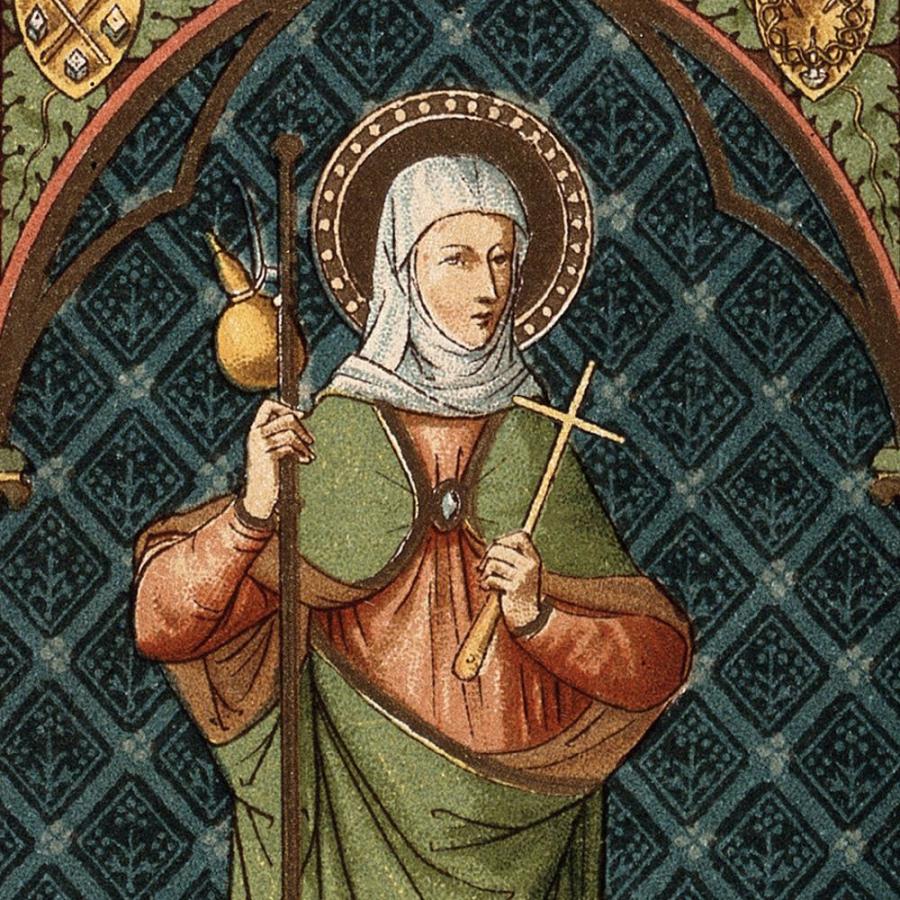
Desert mother. Pilgrim saint. These titles, given to Paula of Rome, epitomize the contrasts and paradoxes of her life.
Sometimes regarded as the first female monastic, St. Paula began her adult life primarily as a mother to six children. Raised in a wealthy Christian household in fourth-century Rome, Paula was married to a wealthy nobleman with whom she lived in peace and prosperity for sixteen years. It was her husband’s sudden death when she was only thirty-two that first brought the desert into her life.
His death marked a dividing line between St. Paula’s comfortable and honored existence, and the new life which opened up now before her. Overcome by grief, she began to hear of saints such as Anthony, who had withdrawn into the desert. Their humble and prayerful way of life called to her. She resolved at first to turn her home in Rome into a monastery. However, an opportunity to travel to the Holy Land with her spiritual father, St. Jerome, brought her into the literal desert for the first time.
It was here that her life began to mirror itself. In forsaking her traditional role as mother and leaving behind five children (other than the one daughter who accompanied her on her travels), she entered into a new realm of motherhood and desert monasticism as abbess. After a lengthy pilgrimage to many holy sites, St. Paula and St. Jerome resolved to build a double monastery in Bethlehem to provide a place for both men and women to devote their lives to prayer and caring for the poor and pilgrims through an adjoining guesthouse.
In a sense, once she stepped foot on the boat in Rome, St. Paula’s pilgrimage never ended. She was always learning, always welcoming others in, always journeying deeper into interior prayer. St. Jerome writes that leaving behind her children was the hardest thing she had ever done - and yet she was convinced she was following God’s will. Embracing her new role of mother to the monastery, St. Paula was known for her lavish generosity to the poor, spending much of her family’s and the monastery’s fortune on their needs. When chided for what seemed like foolishness or thriftlessness, St. Paula responded: “I, if I beg, shall find many to give to me; but if this beggar does not obtain help from me, who can give it to him? He will die, and if he dies, of whom will his soul be required?"
In 404, St. Paula was fifty-six years old, and she sensed her death approaching. For twenty four years, St. Paula had not only found her place in the desert, but she had also built a community. She was, indeed, a pilgrim-mother: boldly following the call to her own soul while never forsaking the call she heard from Christ in her sacrificial love for those around her.
She was buried in the Church of the Nativity in Jerusalem and was canonized a year after her death. Her feast day is celebrated on January 26th/February 8th.
Troparion
You took up the Cross and followed Christ, O Mother, and in that way preserved in yourself the image of God. By so doing, you taught us to disregard the flesh, which passes away, and to care for the soul, which is immortal. That is why, O Venerable Paula, your spirit rejoices with the Angels.
Holy mother Paula, pray to God for us!
(We could not find any high-resolution Orthodox icons of St. Paula. If anyone knows of one, or any iconographers out there want to produce one, we’d love to see it!)
Color lithograph: S.té St Augustin, Evèq. de Bruges


